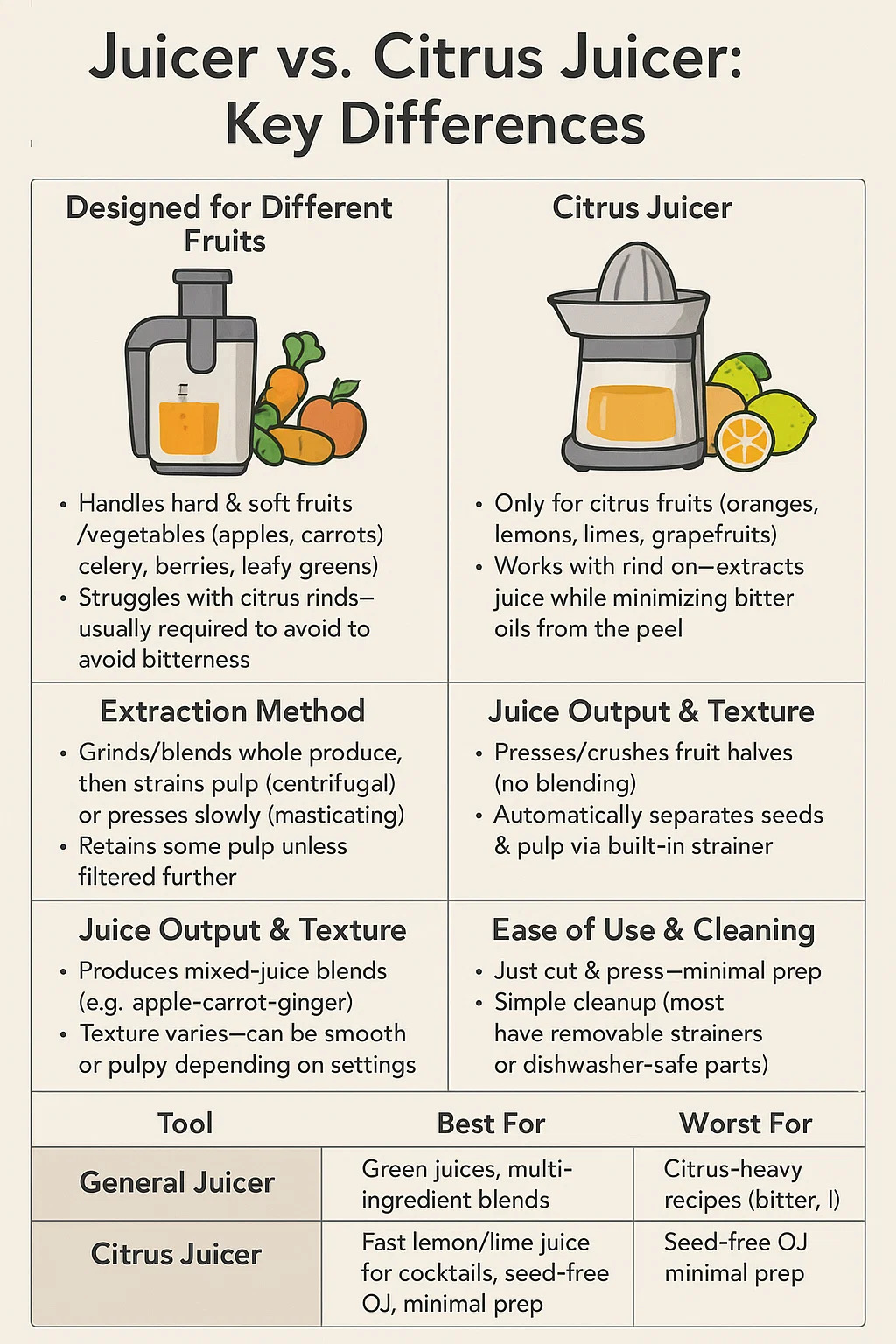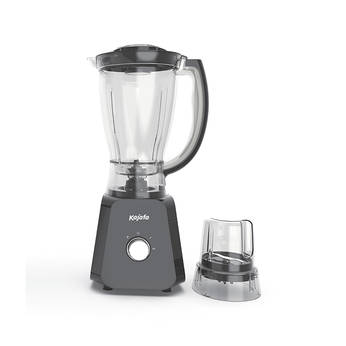Juicer vs. Citrus Juicer: Key Differences
1. Designed for Different Fruits
Juicer (General):
Handles hard & soft fruits/vegetables (apples, carrots, celery, berries, leafy greens).
Struggles with citrus rinds—peeling usually required to avoid bitterness.
Citrus Juicer:
Only for citrus fruits (oranges, lemons, limes, grapefruits).
Works with rind on—extracts juice while minimizing bitter oils from the peel.
2. Extraction Method
Juicer (General):
Grinds/blends whole produce, then strains pulp (centrifugal) or presses slowly (masticating).
Retains some pulp unless filtered further.
Citrus Juicer:
Presses/crushes fruit halves (no blending).
Automatically separates seeds & pulp via built-in strainer.
3. Juice Output & Texture
Juicer (General):
Produces mixed-juice blends (e.g., apple-carrot-ginger).
Texture varies—can be smooth or pulpy depending on settings.
Citrus Juicer:
Yields pure, strained citrus juice (no pulp unless manually added back).
Clear & consistent—ideal for cocktails, dressings, or fresh OJ.
4. Ease of Use & Cleaning
Juicer (General):
More prep work (chopping apples, de-stemming kale).
Harder to clean—multiple parts, pulp traps, and fine mesh filters.
Citrus Juicer:
Just cut & press—minimal prep.
Simple cleanup (most have removable strainers or dishwasher-safe parts).
5. When to Choose Which
| Tool | Best For | Worst For |
| General Juicer | Green juices, multi-ingredient blends, fiber-rich drinks. | Citrus-heavy recipes (bitter, inefficient). |
| Citrus Juicer | Fast lemon/lime juice for cocktails, seed-free OJ, minimal prep. | Anything non-citrus (jams, breaks). |



 英语
英语 中文简体
中文简体














